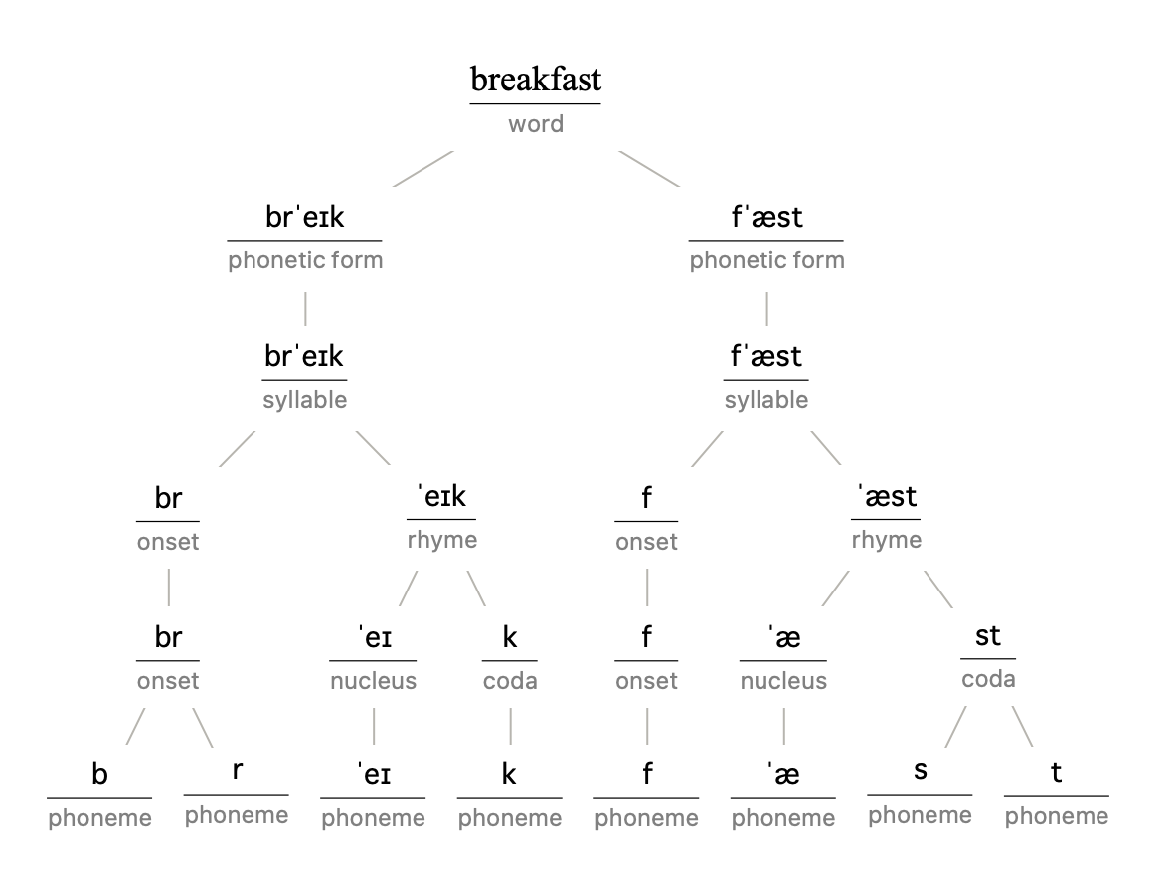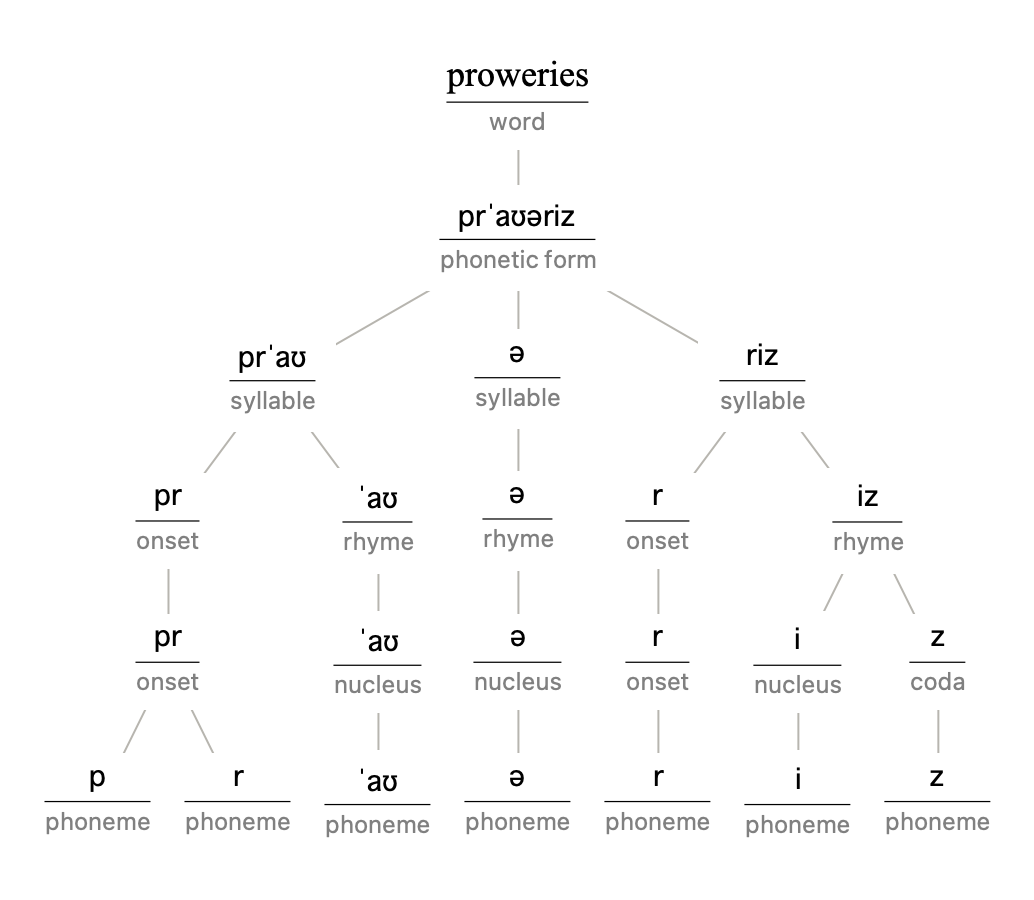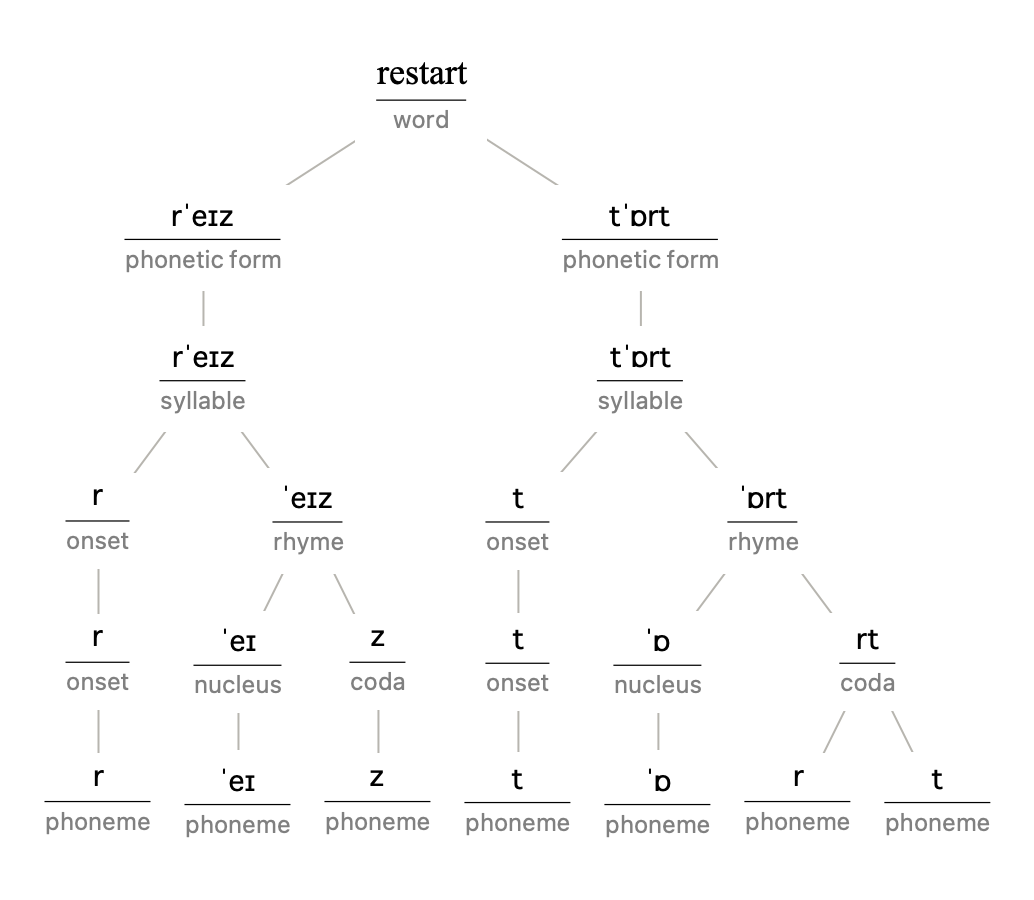Wolfram Function Repository
Instant-use add-on functions for the Wolfram Language
Function Repository Resource:
Generate the phonological tree structure of an English word
ResourceFunction["WordPhonologyTree"][w] gives the phonological structure of w as a tree. |
Visualize the phonological structure of an English word:
| In[1]:= |
| Out[1]= |  |
Visualize the structure of a nonsense word:
| In[2]:= |
| Out[2]= |  |
Include empty onsets in the visualization:
| In[3]:= |
| Out[3]= |  |
Compare the rhyme components of two words:
| In[4]:= |
| Out[5]= |
Determine whether syllables of a word are light or heavy:
| In[6]:= | ![tree = ResourceFunction["WordPhonologyTree"]["alike"];
subs = TreeCases[tree, {_, "rhyme"}];
TreeLeafCount /@ subs /. {1 -> "light", _Integer -> "heavy"}](https://www.wolframcloud.com/obj/resourcesystem/images/81a/81a4d9e4-d4ca-48d6-a9be-a2447f31ab87/5d8c603f83767a7c.png) |
| Out[8]= |
The skeletal tier (aka, "timing layer") is not shown because it involves nodes that recombine into a single leaf, which is not compatible with a tree structure.
WordPhonologyTree[w] can make mistakes (on the order of 1% of random words), usually when dividing w into compound word parts:
| In[9]:= |
| Out[9]= |  |
Wolfram Language 13.0 (December 2021) or above
This work is licensed under a Creative Commons Attribution 4.0 International License